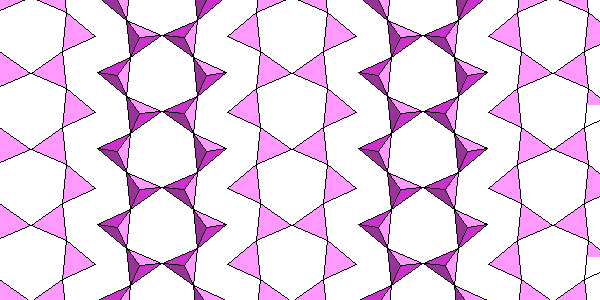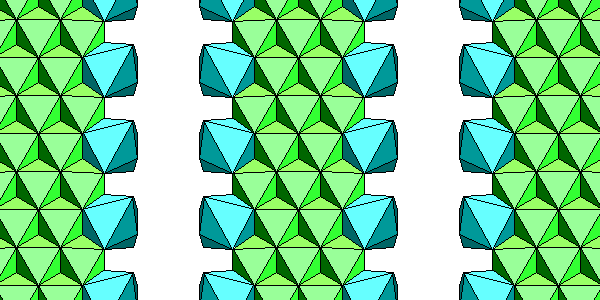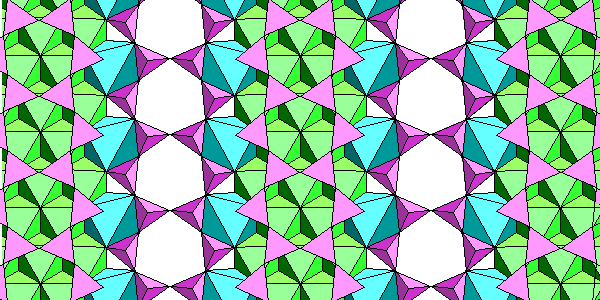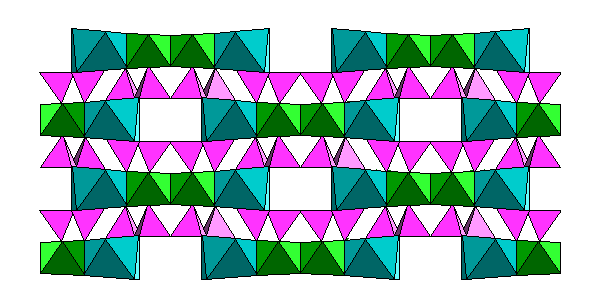Tremolite Structure
Steven Dutch, Professor Emeritus, Natural and Applied Sciences,
Tremolite is a calcium-magnesium amphibole, basically the amphibole analogue of diopside.

In the tremolite silica chains, the structure is close to the ideal textbook hexagonal structure, only slightly deformed.

The silica sheets join strips of cation octahedra. Magnesium octahedra are in green and calcium octahedra are blue. Because of the room for electrostatic repulsion, and the large size of the calcium ion, the Ca-O octahedra are distorted.

Here we see the relationship between the silica and calcium-magnesium strips. The apparent edge-sharing of the silica tetrahedra and calcium octahedra is a perspective illusion. The edges lie above one another and are not in the same plane.

The tremolite structure viewed end-on. Again, the apparent edge-sharing of the silica tetrahedra and calcium octahedra is a perspective illusion.
Return to Mineralogy-Petrology Index
Return to Thin-Section Index
Return to Crystals and Light Index
Return to Crystal Structures Index
Return to Mineral Identification Tables
Return to Professor Dutch's Home Page
Created 22 April 2013, Last Update
Not an official UW-Green Bay Site